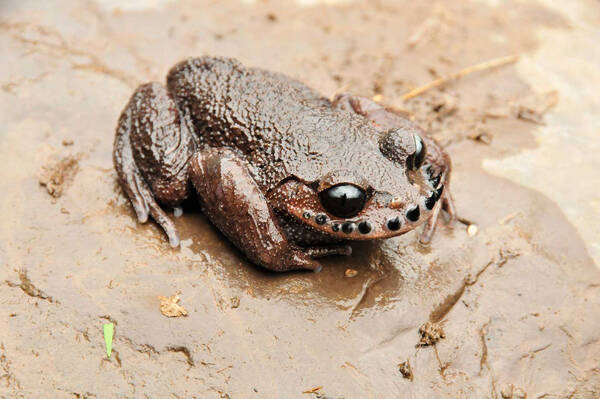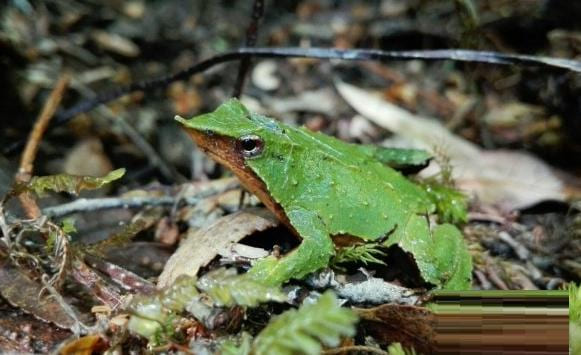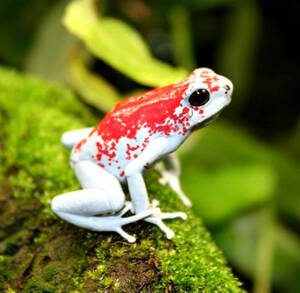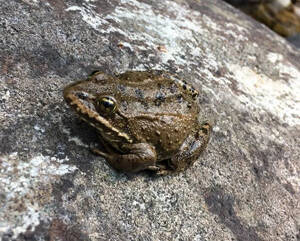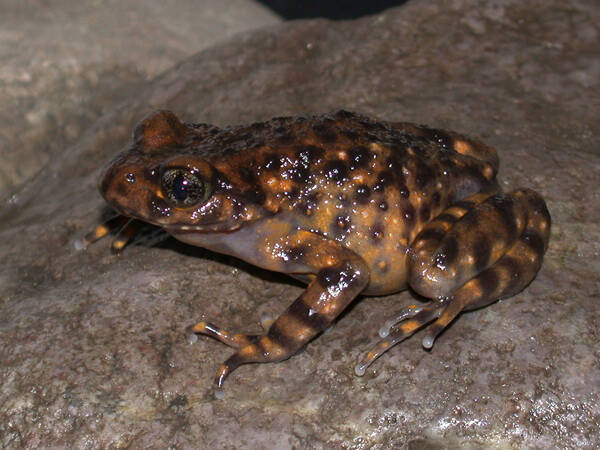Leptobrachium boringii
IUCN
LCBasic Information
Scientific classification
- name:Leptobrachium boringii
- Scientific Name:Leptobrachium boringii,Emei Moustache Toad,Vibrissaphora boringii,Horned Monster, Bearded Toad, Bearded Toad
- Outline:Anura
- Family:Anura Ceratopus Pseudocercos
Vital signs
- length:59-89mm
- Weight:
- lifetime:
Feature
The male toad has 5-8 keratin spines on each side of the upper lip, while the female toad has the same number of beige dots on the corresponding parts.
Distribution and Habitat
Endemic to China, distributed in Chongqing (Youyang), Sichuan (Dujiangyan, Emeishan, Yunlian), Guizhou (Yinjiang, Jiangkou), Yunnan (Daguan), Hunan (Sangzhi), Guangxi (Tianlincenwanglaoshan).
Lives near mountain streams with lush vegetation at an altitude of 700-1700m. Lives on land.
Appearance
The eardrum is hidden or slightly visible, with columella; the upper jaw has teeth, but no vomerine teeth. The skin on the back has reticular ridges, and the back of the limbs has oblique fine ridges. The ventral surface of the body and limbs is covered with small white particles; there are axillary glands and femoral glands, and a crescent-shaped white spot on the crotch.
Details
The Emei Bearded Toad is an amphibian of the family Ceratopus and the genus Pseudocercidae. It lives near mountain streams with lush vegetation at an altitude of 700-1700 meters. Adult toads live on land in the grass on the hillside, are not good at jumping, and crawl slowly. Tadpoles mostly move between rocks in the backwater of streams. Small tadpoles generally live on the edge of the puddle in the mountain stream, while large tadpoles live in the deep puddle of the larger mountain stream. They often hide in the cracks of the rocks at the bottom of the water during the day and are not easy to find.
The breeding season is from late February to mid-March each year. During this period, male toads can make a low "gu-gu-gu" sound. Adult toads enter the stream section with slow flow and many stones to lay eggs. Female toads lay 250-340 eggs, which are attached to the bottom of the stones in a ring shape. Tadpoles mostly move between the stones in the backwater of the stream.
The Emei Bearded Toad has a peculiar appearance. It can not only be used for exhibition to popularize scientific knowledge, but also has certain significance for studying the evolution of the structure and function of amphibians. In addition, the toad can prey on a variety of pests and has a certain effect on preventing and controlling agricultural and forestry pests.
The ecological environment quality of the toad's habitat has declined, and its population is very small.
It is listed in the second level of the "List of National Key Protected Wildlife in China".
